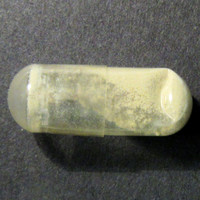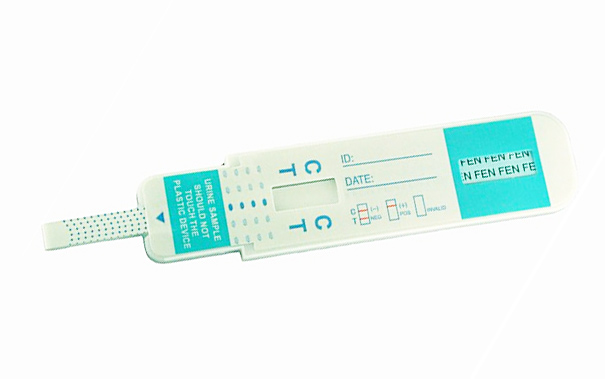As covered last week in Fentanyl Test Strips, Hot Spots, and Unhomogenized Samples, two samples reported in the November 6, 2017 batch of EcstasyData results were submitted to the lab with notes by the senders saying they had used fentanyl field tests on their sample before sending it.

The original GC/MS results for these samples (#5776 and #5779) did not reveal fentanyl. After writing about the problems associated with non-homogeneous samples and “hot spots”, we decided to use this as an opportunity to re-test both of these samples. This time, we used up 100% of what was sent by dissolving all of the sample (and not just a small portion), to make sure not to miss any potential “hot spots” in the original. That is a different method than our normal sampling protocol, meant to verify the no-fentanyl results.
On November 12, the lab reported back that the re-analysis of one of the samples returned a different result than the original analysis. The other sample’s result did not change.
Re-tested Using Modified Sample Prep Method
With most EcstasyData samples, there is material left over after an analysis. Whatever is not destroyed in the GC/MS process is stored for secure disposal after one year. This permits the lab to re-test a sample, potentially several times, if circumstances call for a re-test.
A modified method was used to re-test samples #5776 and #5779: For each of the re-tests, all the material, including the capsule, that was left over after the original analysis was placed in solvent to produce a consistent liquid sample, which was then run through the normal GC/MS process. This eliminated the “sub-sample of a sub-sample” condition that we described in the previous article.
Heroin Sample 5779: Positive fentanyl test-strip confirmed by GC/MS
The sample whose result did change after re-analysis was a powder represented as heroin.
The person who submitted the sample had noted the ‘Sample tested positive on both ‘DanceSafe’ and another brand of Fentanyl test strips (or  cassette / dip card). Would like to know if these immunoassay fentanyl tests actually work.’ While the first GC/MS analysis did not detect fentanyl (even though a lot of the material was prepped for testing and the sample appeared homogenous), the second analysis that followed the method above did detect fentanyl.
cassette / dip card). Would like to know if these immunoassay fentanyl tests actually work.’ While the first GC/MS analysis did not detect fentanyl (even though a lot of the material was prepped for testing and the sample appeared homogenous), the second analysis that followed the method above did detect fentanyl.
This discrepancy in results can most likely be attributed to a hot spot or spots in the powder.
The lab also identified several other substances that they did not report in the first analysis: trace amounts of codeine, 4-ANPP, papaverine, and very small amounts of actylecodeine and 6-monoacetylmorphine. The additional very small findings are normal minor components of poorly-cleaned heroin produced from natural poppy resin. When we re-test a sample looking for very potent substances like fentanyl, we take a closer look at the trace and near-trace tiny “noise” bumps in the GC readouts.
Although we do report trace substances in most cases, street heroin is a good example of the type of material that often contains a lot of “noise” because it’s not pure, nor is it a combination of drugs; it’s a partially-synthesized natural product with lots of leftovers.
Because of the issue of fentanyl and fentanyl analogs showing up in heroin, EcstasyData has obtained a number of NPS-fentanyl analog standards and will be taking extra care to look for them in future heroin and opioid samples. Please include on your submission forms if you have concerns about fentanyl in your sample so the lab tech knows to look at what we normally consider “noise” in messy samples, and to set up the Gas Chromatograph run so that we make sure he can differentiate noise from signal at the time points where fentanyl and the known fentanyl analogs come out of the column.
MDMA Sample 5776: False-positive fentanyl test-strip
The sample whose result did not change with re-analysis was for a powder represented as MDMA. Only MDMA, with no traces of fentanyl or other compounds, was detected using the method described above. The person who submitted the sample had noted a ‘strip test tested positive for Fentanyl’ prior to sending their sample in. This strip-test result was not confirmed by GC/MS.
Evolving and Improving Procedures
Although we run one of the best analytical projects of its kind in the world, this is a great example of the many types of errors and misses that can occur, and we take steps like those described here, to verify our results and change our procedures to improve the accuracy over time.
— Sylvia and Earth
